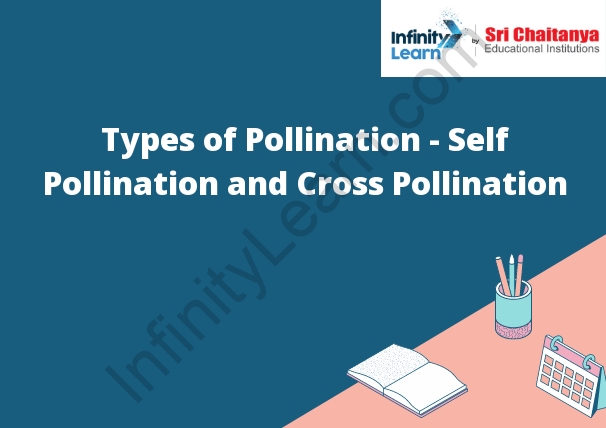Table of Contents
Introduction of Pollination
Pollination is the process by which pollen is transferred from the anther of a flower to the stigma of another flower. Pollen is the male reproductive structure of a flower, and the stigma is the female reproductive structure. Pollination is necessary for the fertilization of the ovules in the ovary, and the development of the seed.

Different Types of Pollination
Pollination is the process by which pollen grains are transferred from the male anther of a flower to the female stigma of a flower. There are several different types of pollination:
1. Autogamy: This is self-pollination, where the pollen from the anther of one flower is transferred to the stigma of the same flower. This can occur when the flowers are self-fertile, meaning that they have both male and female reproductive organs, or when the flowers are pollinated by bees or other insects that transfer pollen from one flower to another.
2. Cross-pollination: This is when the pollen from the anther of one flower is transferred to the stigma of a different flower. This can occur when the flowers are cross-fertile, meaning that they have different male and female reproductive organs, or when the flowers are pollinated by bees or other insects that transfer pollen from one flower to another.
3. Geitonogamy: This is when the pollen from the anther of one flower is transferred to the stigma of a flower on the same plant. This can only occur if the flowers are pollinated by bees or other insects that transfer pollen from one flower to another.
4. Self-incompatibility: This is a type of self-pollination that occurs when the pollen from the anther of one flower is not compatible with the stigma of the same flower. This can be due to differences
Self-Pollination
Self-pollination is the transfer of pollen from the anthers of one flower to the pistil of the same flower or another flower on the same plant.
Types of Self-Pollination
Self-pollination is the transfer of pollen from the anther to the stigma of the same flower or a different flower on the same plant. There are three types of self-pollination:
1) Autogamy: This is when the pollen from the anther contacts the stigma of the same flower.
2) Geitonogamy: This is when the pollen from the anther of one flower contacts the stigma of a different flower on the same plant.
3) Isogamy: This is when the pollen from the anthers of two flowers are morphologically identical and both are capable of fertilizing the ovules.
Autogamy
is when an organism reproduces with itself. This can occur with asexual reproduction or sexually, but in autogamy the two cells merging are from the same individual.
Self-fertilization is a form of autogamy where the two cells merging are from the same individual. This can occur with asexual reproduction or sexually, but in self-fertilization the two cells merging are from the same individual.
Geitonogamy
Geitonogamy is the fertilization of a flower by pollen from the same plant. The pollen is transferred to the stigma of the same flower or to the stigma of a different flower on the same plant.
Cross-Pollination
Cross-pollination is the transfer of pollen from the anther of one flower to the stigma of another. The pollen grains travel from the anther to the stigma via the air, insects, or water. When the pollen lands on the stigma, it germinates and produces a tube that grows down into the style to the ovary. The sperm cells in the pollen then travel down the tube to the ovules and fertilize them.
Types of Cross-Pollination
There are three types of cross-pollination: self-pollination, cross-pollination, and outcrossing.
Self-pollination is when the pollen from the anthers of a flower fertilizes the ovules of that same flower. This can happen when the stamens are directly attached to the pistil, as is the case in many monocots, or when the flowers are very small and the pollen can easily reach the ovules. Self-pollination is also more likely to happen in hermaphroditic plants that have both male and female reproductive organs.
Cross-pollination is when the pollen from one flower is transferred to another flower. This can happen when the flowers are near each other and the pollen can travel by wind or insects, or when the flowers are on different plants but the pollen can travel by insects.
Outcrossing is when the pollen from one flower is transferred to a different plant. This can happen when the flowers are near each other and the pollen can travel by wind or insects, or when the flowers are on different plants but the pollen can travel by insects. Outcrossing is more likely to result in new genetic combinations than self-pollination or cross-pollination.
Types of Pollination
There are three types of pollination:
1. self-pollination: pollen from the anthers of the same flower falls on the stigma and fertilizes the ovules
2. cross-pollination: pollen from the anthers of one flower is transferred to the stigma of another flower
3. wind pollination: pollen is dispersed by the wind









